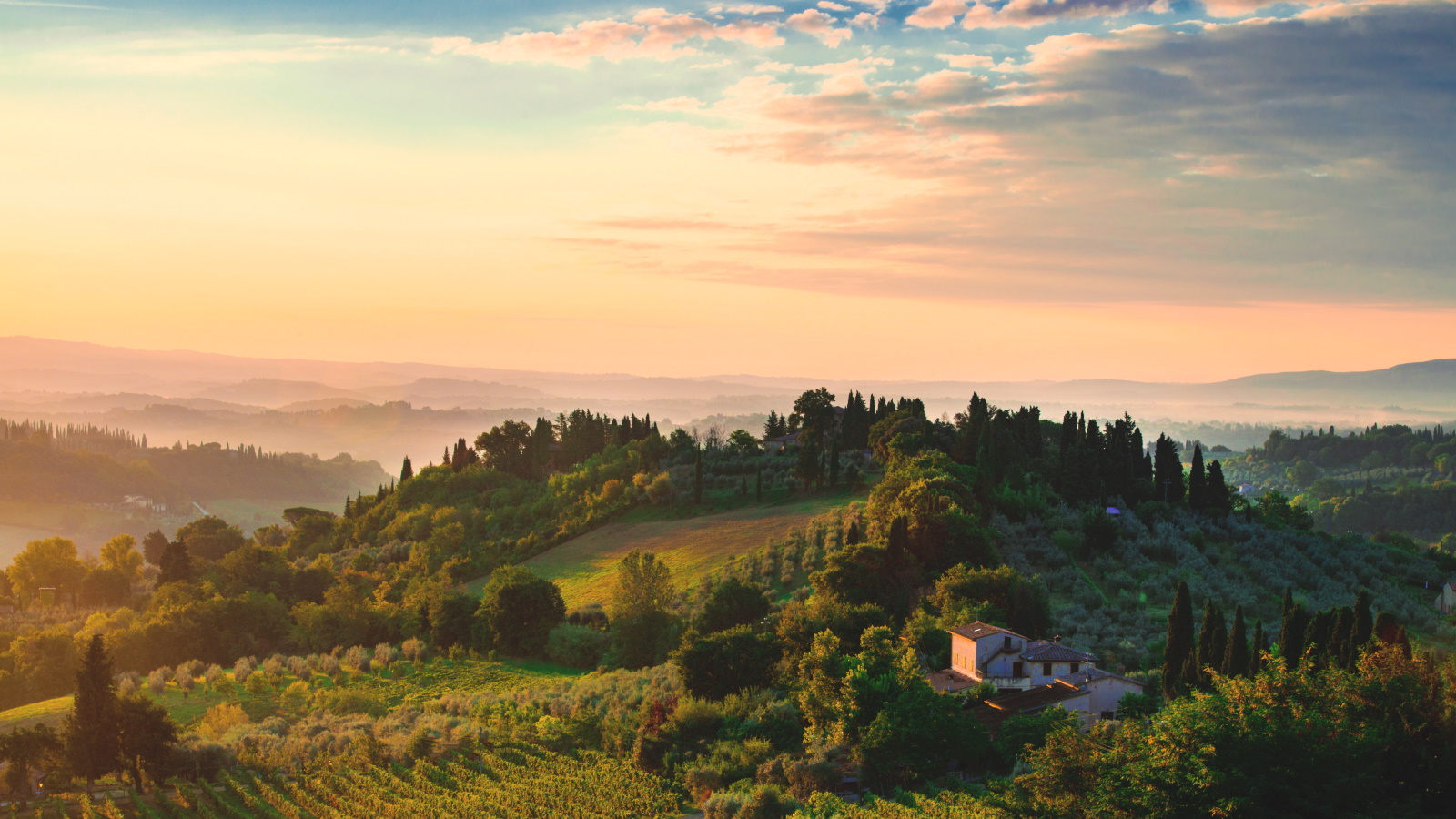
The central Italian region of Tuscany embodies much of what we might consider classic Italy: historic walled cities, rolling hills adorned with vineyards and silhouettes of cypress trees punctuating the landscape.
I was fortunate to work as a professional gardener in Tuscany, growing and gardening under the heat of the Tuscan sun in landscapes that seem so untouched by urbanism. Italian gardens remain rustic and romantic despite the march of modernity, combining natural stonework, evergreen structures and bounties of blooms, all in an elegant and timeless style.
Many homeowners considering different backyard ideas might ask how to create a Mediterranean garden or whether it is possible to create an Italian garden in a small, urban backyard many thousands of kilometers from Europe. While it might seem hard to emulate the look of a Tuscan garden, it is not impossible. Here, I share some of the critical elements of Italian garden design that can help you escape to the Tuscan hills without leaving your backyard.
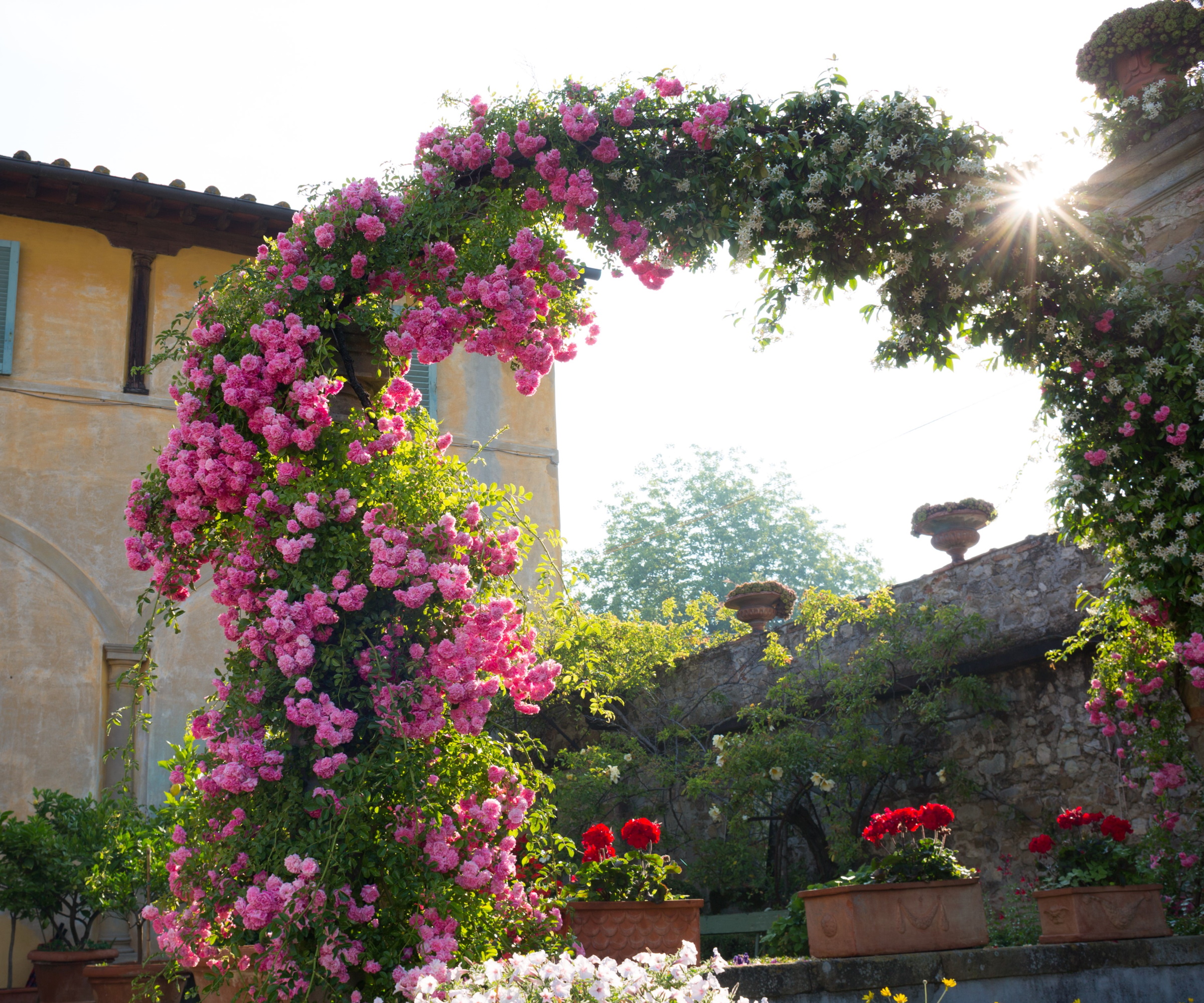
How to create an Italian garden
Italian gardens hold a special place in our imaginations. They are aged, rustic and romantic. Relaxation and enjoyment are important, bringing family and friends together in outdoor spaces that combine bold and antique stonework with evergreen structures.
1. Evergreen structure is important
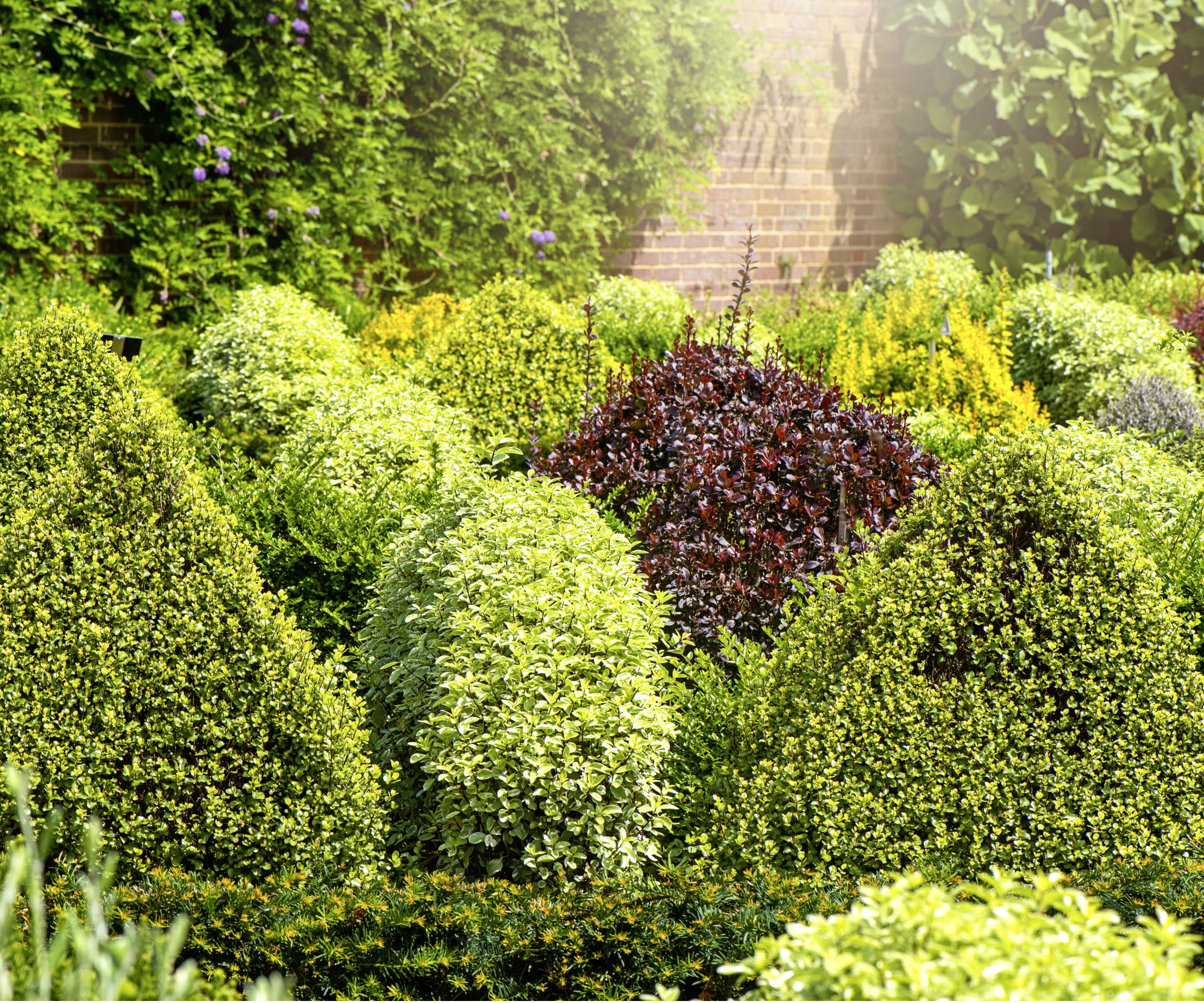
Evergreen structure is important in Italian garden design. Shrubs and hedging will often be sheared and shaped, lining walkways or planting beds. For those seeking year-round interest, landscaping with evergreens is ideal, creating a verdant backdrop that appears just as attractive in the winter months as in the summer.
Cypress tree spires are a common sight across Tuscany, and if you have the space, growing one or more cypresses can help to emulate the Italian look. If you are pushed for space, growing in a container is possible. Cypress trees will grow well in US hardiness zone 7 to US hardiness zones 10, with a preference for full sun.
Cypress trees are available in smaller sizes from Perfect Plants Nursery.
In addition, symmetry and geometry are often an important part of the Italian style, with evergreen avenues of pruned hedging synonymous with Tuscan gardens. For those asking how to design a parterre garden, it needn't be as complicated or intricate as you might think. Simply lining a rectangular flower bed with low hedging can help to create a formal garden design.
Typically, Buxus sempervirens, common box, would have been used to create both low and medium hedging, suitable for shaping and topiary. However, box blight is a fungal disease that has a devastating and unsightly impact on this plant. Consider using yew, holly or phillyrea as evergreen alternatives.
2. Use aged and antique stone
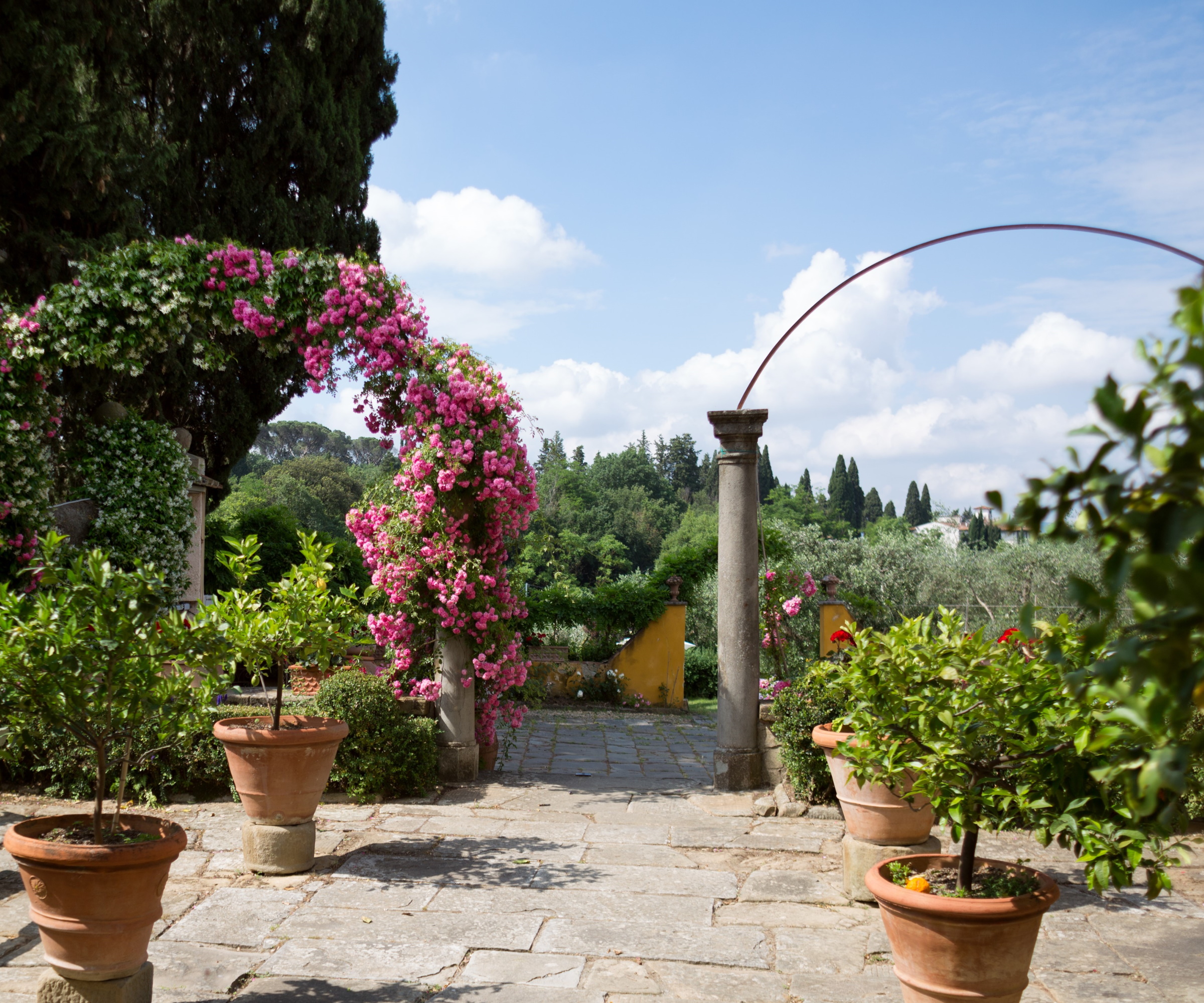
To create an Italian garden, choosing the right hardscaping materials is important. For paved backyard ideas, consider using warm and earth-toned stonework prevalent in Tuscany. Using old, aged stone in different hues of gray, terracotta and red is effective, as opposed to modern slabs or tiles. Natural flagstones will work well and any chips or imperfections will complement the aesthetic.
For a historic Tuscan look, consider adding some statuary, large stone pots, or antique, weathered columns. Adding one or more of these unique and interesting features is a good idea to help create the Mediterranean look. For example, using an old terracotta pot planted with an olive or lemon tree, as seen in the image above, can help to instantly alter the aesthetic of your backyard.
Shop for Mediterranean planting
As an evergreen tree, Olea europaea 'Arbequina' is an attractive specimen. The gray-green foliage will stay green year-round and you may see new growth in spring or fall. The trunk of the tree has dark brown bark that is attractive in the border or in a pot.
The Italian Cypress tree, Cupressus sempervirens, also known as the Tuscan Cypress, takes on a narrow, columnar form and tidy, well-groomed appearance without any pruning. This makes it a unique low maintenance evergreen.
Agapanthus africanus 'blue beauty' is an evergreen known for its prominent production of lush blue blooms that emerge above its green foliage in late spring! The flowers are showstoppers when planted in the backyard, appearing like globes.
3. Seating areas should be central
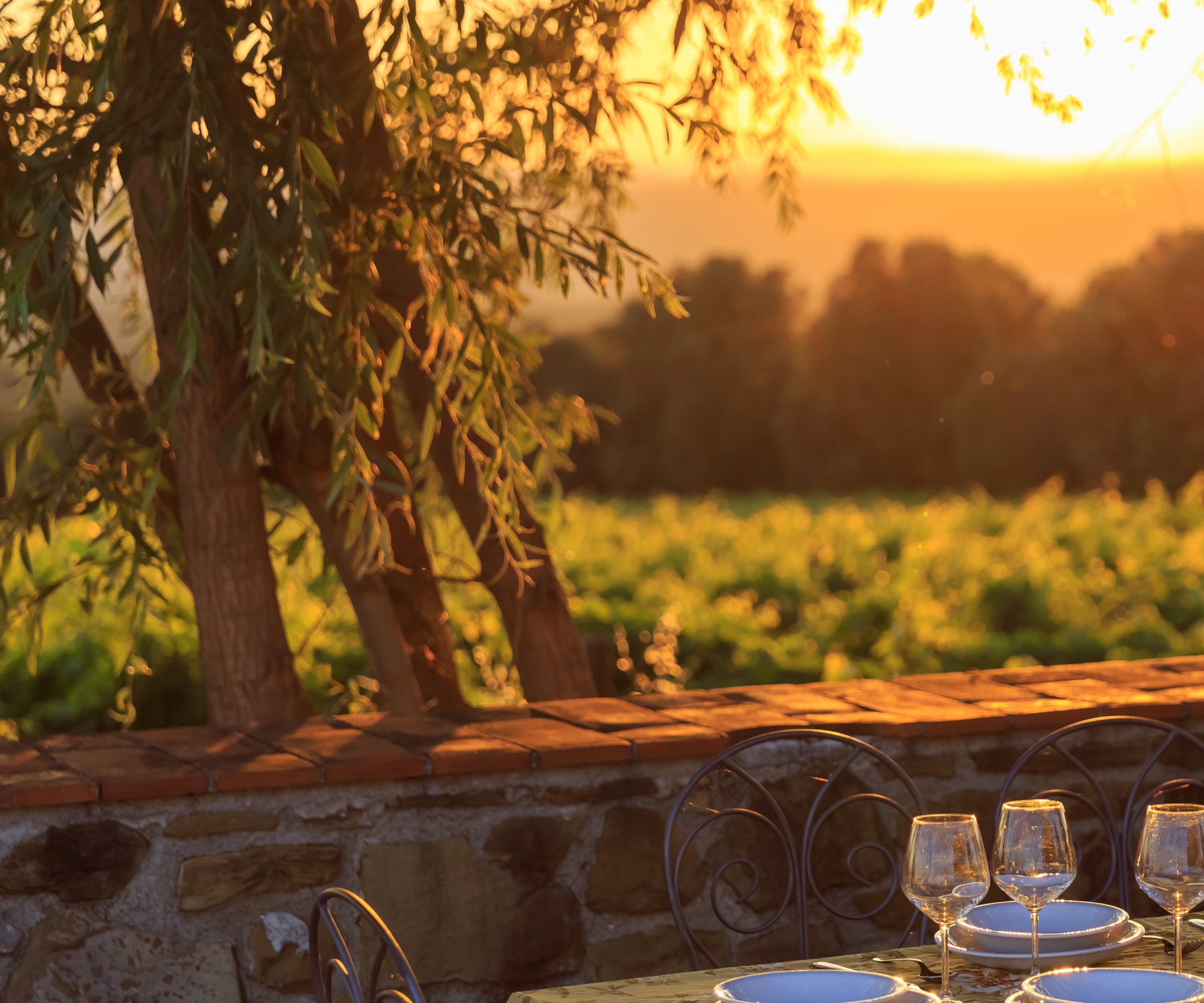
Outdoor living is an important facet of Italian garden design, with seating and dining areas for relaxation and entertaining considered the primary purpose of any outside space. Old tables and chairs, with rusting metal or crumbling wood, should take advantage of the best viewpoints of the surrounding landscape, ideal for enjoying an evening glass of something cold. While you might not have a view of the rolling Tuscan hills at the bottom of your yard, consider the best location for a seat or a bench when designing your space.
If you are considering pergola ideas for your backyard then you are in luck. Garden structures, such as pergolas, are a popular feature of Tuscan gardens, ideal for covering in climbing vines, such as wisteria or some of the best climbing roses. Once established and decorated with colorful blooms, this makes for a shady and intimate corner to relax and unwind.
In short, Tuscan gardens are a place for friends and families to gather, so the inclusion of seating or an outdoor kitchen area is something to think about. Consider different patio furniture ideas that will make the best use of your space, ideally in a location that will soak up the afternoon and evening sun.
4. Choose hardy, drought-tolerant planting
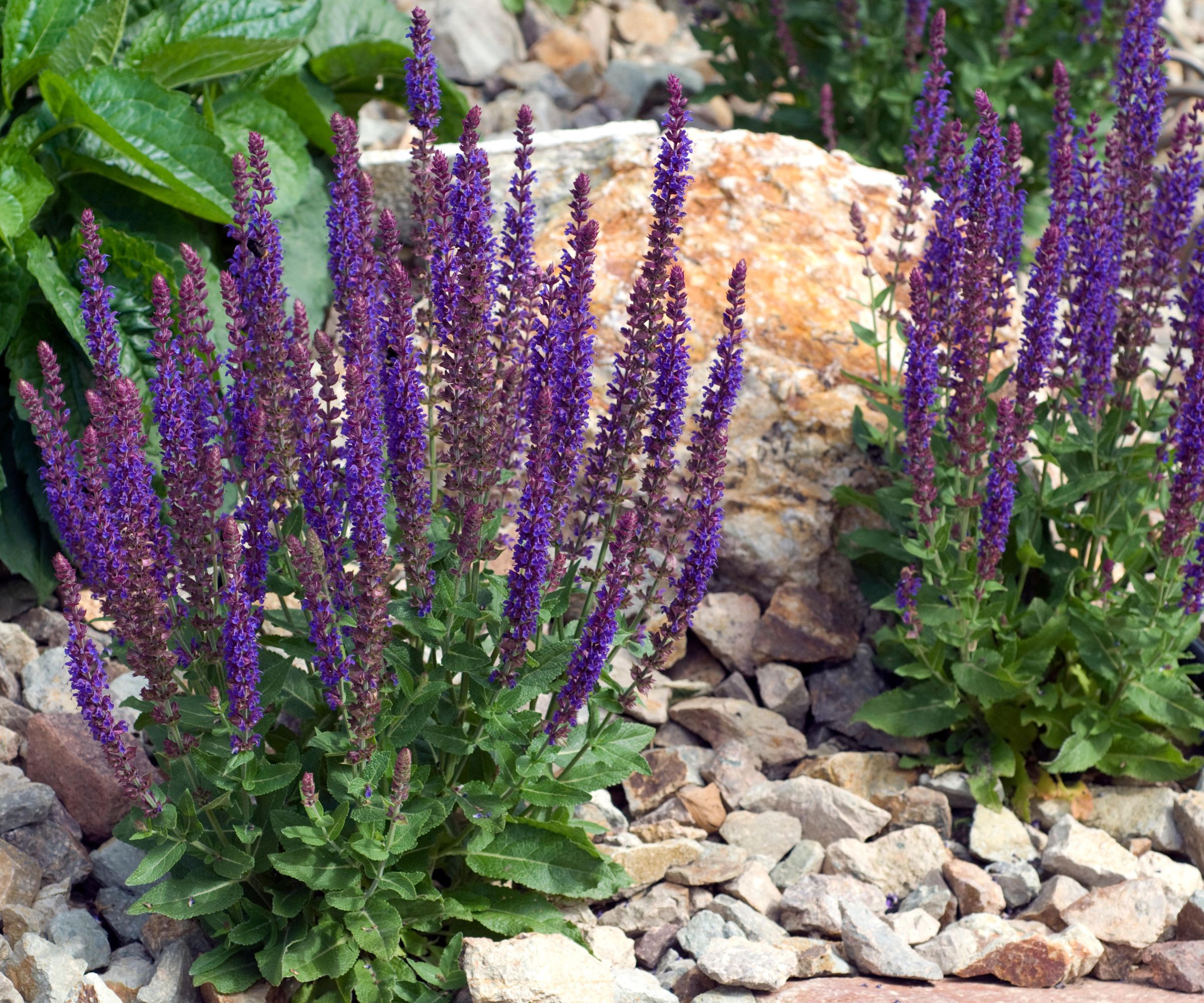
Tuscan gardens are typically full of Mediterranean plants that thrive in the Italian climate, characterized by hot and dry summers. Incorporate trees and shrubs in your yard that are suitable for your US hardiness zone. Olive trees, for example, are a popular option that can be grown in most climates and do well in pots or the garden border.
Additionally, plants with silver foliage can be grown to add an attractive contrast to evergreen hedging and established shrubs. Many plants with silver foliage are classified as drought-tolerant, requiring low levels of water during the summer months. Many flowering shrubs for full-sun positions produce silver-gray leaves, including lamb's ears and Russian sage, both of which would be an ideal planting addition to an Italian garden.
5. Incorporate herbs in planting borders
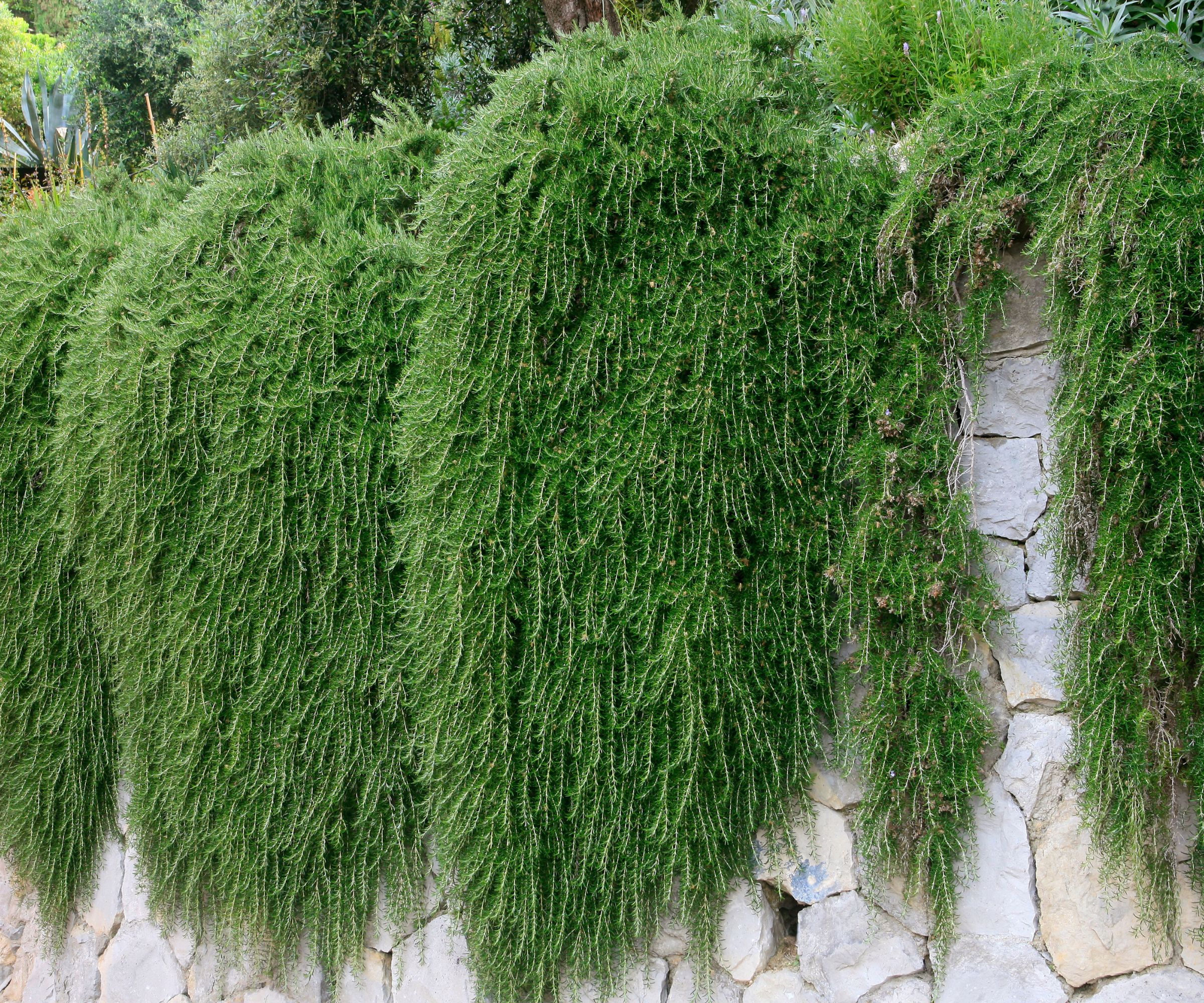
Growing a selection of the best drought-tolerant herbs is recommended for those seeking to create a Tuscan or Italian garden. Lavender, for example, is floriferous and fragrant, making it the perfect plant for pollinators. Growing well in backyard borders or containers, lavender can help to add color and scent to any outside space.
In addition, rosemary and sage are two aromatic herbs that are both ornamental and functional. Both are popular herbs to use in cooking, while also also fantastic when grown outdoors in the backyard for herb garden ideas. Rosemary, as seen in the image above, makes for a useful plant when it is left to trail and cascade over garden walls, helping to soften boundaries and hard landscaping.
FAQs
What plants should I grow for an Italian-inspired garden?
Consider using Mediterranean plants that are drought-tolerant. Combine perennial plants, like salvias and geraniums, with herbs, such as rosemary and lavender, helping to create an aromatic and ornamental yard. Olive trees and citrus trees are often considered some of the best low-maintenance trees for pots and will grow well in large, terracotta vases for a distinctly Tuscan look.
Taking inspiration from Italian gardens can help you create a backyard that is both romantic and charming, where you can relax and unwind in the summer evenings while entertaining friends and family. If you have a large yard, consider garden zoning, to create a room or section of your outside space that could become an Italian 'room'.







